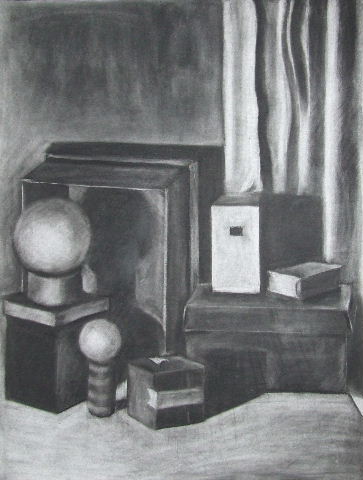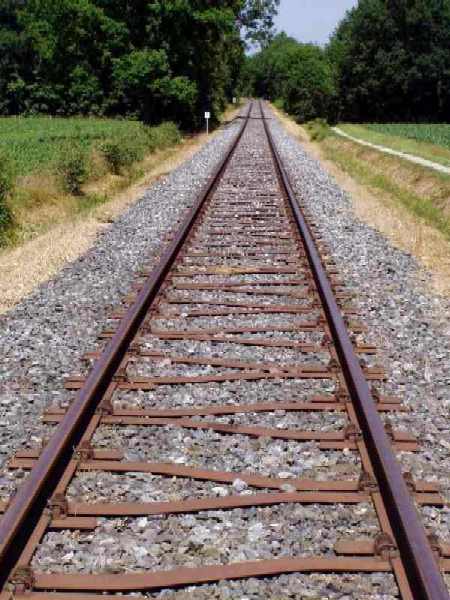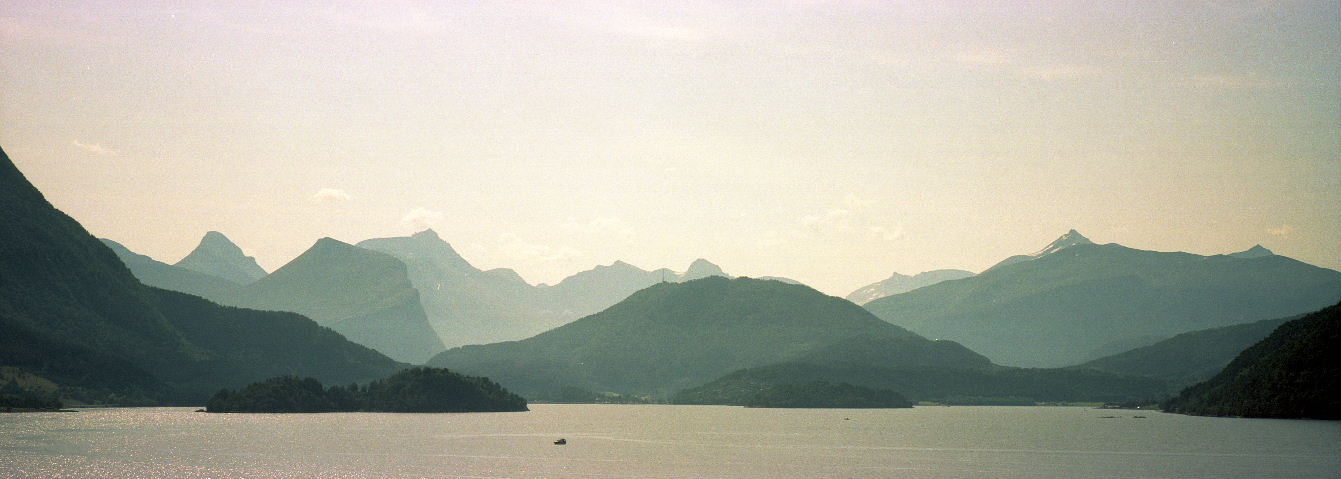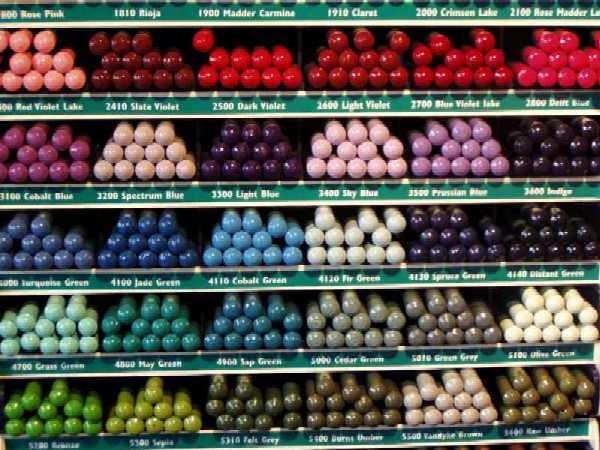| 1. Linear Perspective: This is the perspective most people think of when they hear the word "perspective." Parallel lines converge at a vanishing point on the horizon. Here you can see this happening with the railroad tracks. An extension of this is the use of multiple vanishing points. This form of perspective can be accurately constructed using a ruler. |
| 2.Spherical Perspective: By giving objects in your work that are farther away less color depth, making them somewhat vaguer and grayer, you enhance the illusion of depth. Imagine looking into the distance from a lookout tower. The color depth at the horizon is much less than that of objects nearby. In the example next to this, you can see that the groups of trees become grayer towards the back. |
| 3. Color Perspective: Warm colors seem to come towards you, while cool colors recede. Try it out by drawing a number of equally sized circles and coloring them in different colors. You can also see it clearly in the photo of the pencils next to this. The red tips seem to come forward. By using this in your work, you can also suggest or enhance depth. |
| 4. Use of Shadows: By using shadows on or from objects, you also increase the feeling of space in your work. Think, for example, of shadow that indicates the curvature of a ball. In the photo of the mushroom, a shadow indicates the shape of the cap. This makes it appear rounded and therefore gives the illusion of depth. Also, the shadow cast by an object in the sun onto the ground enhances the feeling of depth in an image. |
| 5. Overlap: By allowing objects to overlap, it appears as if they are behind each other. And things that are behind each other suggest depth. You can see it in the picture of the sunflowers. They overlap each other. Because our brains know that this means they are behind each other, it gives us a sense of depth. |
6. Varying Size: By depicting the same objects in different sizes, you also achieve a sense of depth. What is smaller appears farther away than what is larger. Just look at the cows. We know that the cows are the same size in reality. Because one appears smaller, our brains tell us that this cow is farther away. Of course, this can only happen if there is depth.
By considering these methods of perspective in your work, you can influence the feeling of depth and perspective.
|









